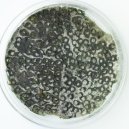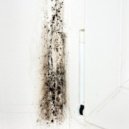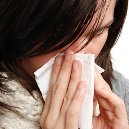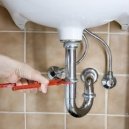Find a pre-screened local mold removal specialist Free Estimate
Find a Mold Specialist Now
Click or Call, Toll-Free 24/7
What is Mold?
We hear a lot in the media these days about the dangers of exposure to mold, but what is mold exactly, anyway? Mold is not a plant or an animal, but a type of fungi. We eat some types of fungi, like many kinds of mushrooms and the yeast we use to make bread rise. Some types of mold are even used to make medicine, like the type of mold that is used to make penicillin, a life-saving antibiotic. Other types of mold can be harmful to our health, however.
There are hundreds of different kinds of mold found both indoors and outdoors. Mold grows in damp, dimly-lit areas. Indoors, it can often be found in places like attics, basements, crawl spaces, and bathrooms. Mold is also common in other areas if there is a leak in the roof, leaky windows, leaky pipes, or seasonal flooding. Some molds commonly found indoors include aspergillus, chaetomium, cladosporium, penicillium, and stachybotrys (sometimes referred to as black mold, although many types of mold are black in color).
What is Mold Related Illness?
Because mold spores are very tiny and very light, they easily become airborne. Once floating around in the air, mold spores are easily inhaled by anyone in the vicinity. It’s not healthy to inhale any type of mold spores, but some types of mold actually produce toxins, known as mycotoxins, that frequently cause a variety of health problems.
Not everyone exposed to mold develops mold related illness, and some people are more susceptible than others, including the elderly, the very young, those with respiratory problems like asthma, and those with immune related disorders. Everyone, even healthy young adults, is at risk for mold related illness if you have a mold problem in your home, however. Even your pets can get sick from too much mold in the home.
Some of the illnesses caused by mold include aspergillosis, blastomycosis, histoplasmosis, coccidioidomycosis, paracoccidioidomycosis, sporotricosis, and systemic candidiasis (a yeast infection). Symptoms of mold related illness are wide-ranging and include:
- Headaches
- Sore throats
- Trouble breathing, wheezing, and shortness of breath
- A runny nose or stuffed up nose
- Coughing
- Sneezing
- Red, itchy, watery eyes
- Asthma attacks or asthma-like symptoms in people not previously diagnosed with the disease
- Infections in the lungs, such as pneumonia and bronchitis
- Chronic sinusitis (sinus infections)
- Rashes or hives
- Fatigue
- Depression
- Depressed immune system, causing you to get sick easily
If you have mold in your home and have symptoms of mold related illness, you should see your doctor for a diagnosis and treatment. However, symptoms will likely continue, even with treatment, until all of the mold is removed from your home.
What is Mold Remediation?
Mold remediation is the process of removing mold and repairing mold-related damage in the home. It’s a complicated process and must be done carefully in order to prevent further exposure to potentially harmful mold spores. Mold can be cleaned from some materials, like bathtubs and tile, and the surfaces disinfected. Some materials, though, like drywall, wood, and carpeting, are impossible to clean thoroughly and instead must be removed and replaced.
Mold remediation is challenging in part because mold can grow in so many out-of-sight places, including inside walls, under carpeting, above ceiling tiles, and inside heating and air conditioning ducts. Just locating all the mold can be difficult, and if you miss even a little bit, it will just continue to grow and spread. Soon you’ll have a full-blown mold problem on your hands again.
Mold removal is also challenging because the process disperses many more mold spores into the air, increasing the risk of mold related illness. Due to safety concerns, we recommend hiring a mold remediation professional for the job, though it is possible to tackle the task yourself if you’re only dealing with a small amount of mold (such as a surface area covering no more than ten square feet) and you have no pre-existing health issues that would increase the risk for you. If you’re experiencing symptoms of mold related illness, you should not attempt a mold remediation job yourself, though, because you’ll end up exposing yourself to more mold and making your symptoms worse.
If you would like a list of licensed mold remediation experts in your area, follow the link.
For More Information
For more information about mold, mold related illness, and perhaps most important, how to get rid of harmful mold in your home, please check out A Homeowner’s Complete Guide to Mold Remediation. Written by mold remediation expert Brian Turner, this ebook explains what mold is, how it spreads, and how to perform complete mold remediation in your home.
Additional Reading:
Mold Inspection Checklist Before Buying A Home
Several readers have written to us to asked if mold attracts bugs to their home. Since mold and insects both thrive in warm, moist environments, it would make sense. Follow the link for an in depth article on the connection between mold and insects.
Return From What is Mold To Home Page
Free Home Inspection By A Mold Removal Specialist
Search This Website
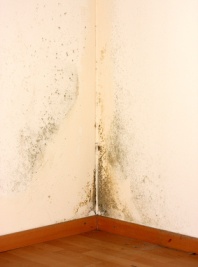
Recent Articles
-
See Our 5 Recommended Mold Removal Companies in Wheaton, IL
Jun 20, 24 10:33 AM
-
See Our 5 Recommended Mold Removal Companies in Aberdeen, SD
Oct 08, 21 04:05 PM
-
Public Housing Tenant Sick from Mold
Apr 24, 20 01:40 PM
